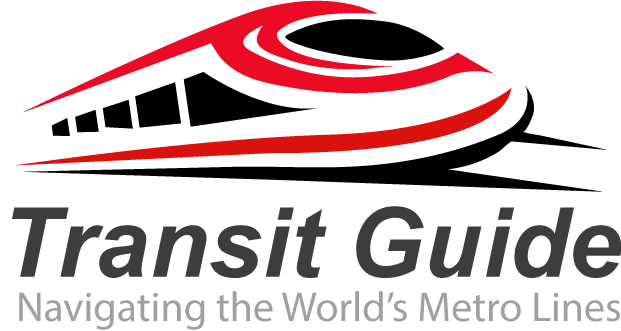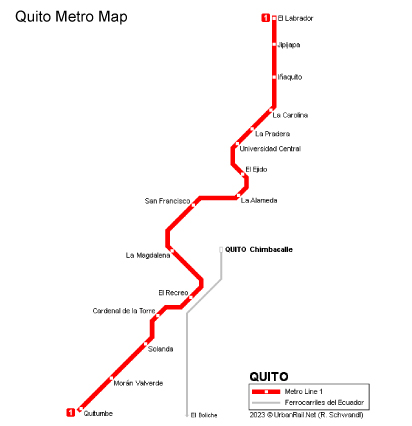The Quito Metro represents a revolutionary milestone in Ecuador’s public transportation infrastructure. As the country’s first subway system, this modern underground railway has transformed how residents and visitors navigate Ecuador’s capital city since its inauguration in 2023.
Overview of the Quito Metro System
The Quito Metro spans approximately 22 kilometers (13.7 miles) through the heart of the city, connecting 15 strategically located stations. This electric train system runs entirely underground, making it South America’s highest subway system at an altitude of 2,850 meters (9,350 feet) above sea level.
Route and Key Stations
The metro follows a north-south corridor, linking major districts and landmarks throughout Quito. Key stations include:
- El Labrador (northern terminus)
- Universidad Central (serving the main university campus)
- Plaza del Teatro (connecting to the historic center)
- San Francisco (near colonial attractions)
- Quitumbe (southern terminus and major bus terminal)
This comprehensive route connects residential areas, business districts, educational institutions, and tourist attractions, making it an essential transportation option for both locals and visitors.
Benefits and Features
The Quito Metro offers numerous advantages over traditional surface transportation. Travel time between the northern and southern extremes takes approximately 34 minutes, significantly reducing commute times compared to bus travel through congested streets. The system can transport up to 400,000 passengers daily, helping alleviate traffic congestion in one of South America’s most densely populated capitals.
Modern amenities include air conditioning, accessibility features for passengers with disabilities, digital information displays, and security cameras throughout all stations and trains. The system operates with Swiss-made trains that provide a smooth, quiet ride through the Andean capital.
Operating Hours and Frequency
The Quito Metro operates Monday through Sunday with trains running every 3-4 minutes during peak hours and every 5-7 minutes during off-peak periods. Service typically begins at 6:00 AM and continues until 9:30 PM on weekdays, with slightly modified schedules on weekends and holidays.
Ticketing and Fares
Passengers can purchase tickets using the integrated payment system that also works with Quito’s bus rapid transit (BRT) network. The metro accepts both single-ride tickets and rechargeable cards, offering convenient payment options for regular commuters and occasional users alike.
Environmental Impact
As an electric-powered system, the Quito Metro significantly reduces carbon emissions compared to diesel buses and private vehicles. This environmentally conscious transportation solution aligns with Ecuador’s sustainability goals and helps improve air quality in the high-altitude capital.
Future Expansion Plans
City planners have outlined ambitious expansion projects that could add additional lines serving eastern and western districts of Quito. These future developments would further integrate the metro with existing transportation networks, including the Metrobus-Q system and traditional bus routes.
The Quito Metro stands as a testament to Ecuador’s commitment to modern urban infrastructure, providing efficient, reliable, and sustainable transportation for the 21st century. Whether you’re a resident commuter or a tourist exploring Ecuador’s capital, the metro offers an convenient way to navigate this historic Andean city.

